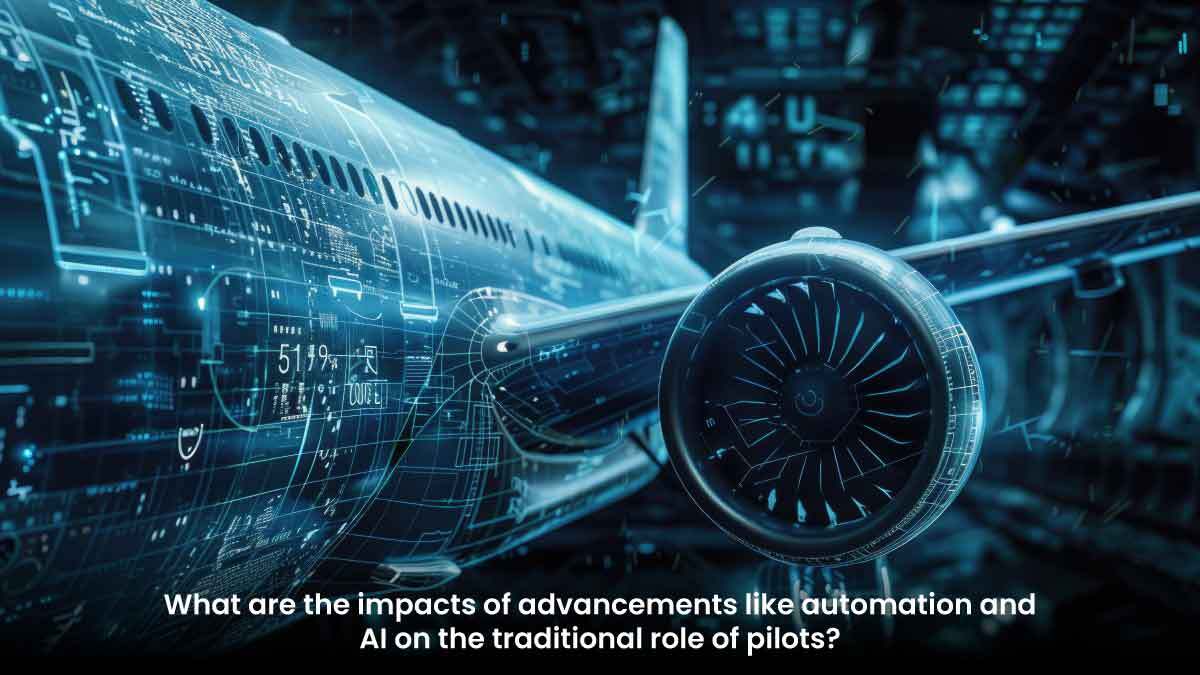
Travelling is the new trend in today’s world, leading to frequent flight demands. To meet the market, there is an increased need for technological advancements to smoothen the process. With Automation and AI in aviation, pilots can deal with numerous challenges impacting flight safety, efficiency, and overall operational effectiveness. Before understanding the impact of AI in aerospace, let’s have a look at the challenges faced by the pilots:
Increased Workload
- Manual Flight Control: Pilots must manually manage all aspects of flight control, including altitude, speed, and navigation, which can be exhausting, especially on long flights.
- Complex Procedures: Without Automation, pilots need to manually follow complex flight procedures, which increases the likelihood of human error.
Limited Situational Awareness
- Data Overload: Pilots need to process vast amounts of data from various instruments and sensors without the aid of AI to filter and prioritise information.
- Real-Time Decision Making: Making timely decisions in rapidly changing situations becomes more difficult without AI to assist in analysing data and providing recommendations.
Navigation and Flight Path Optimisation
- Manual Navigation: Pilots must rely on traditional navigation methods, such as manual plotting and visual cues, which can be less accurate and efficient.
- Fuel Inefficiency: Without AI to optimise flight paths, fuel consumption may be higher, leading to increased operational costs and environmental impact.
Safety Risks
- Human Error: The risk of human error increases without automated systems to double-check and correct pilot actions.
- Emergency Situations: Handling emergencies requires quick and precise responses, which can be more challenging without AI and Automation to assist.
Maintenance and Aircraft Health Monitoring
- Reactive Maintenance: Pilots and maintenance crews rely on reactive maintenance rather than predictive, leading to increased downtime and potential safety issues.
- Manual Inspections: Maintenance tasks require manual inspections and diagnostics, which are time-consuming and may only detect some potential issues.
Air Traffic Management
- Manual Communication: Pilots must manually manage all communications with air traffic control, which can be cumbersome and prone to misunderstandings.
- Congestion Management: Without AI to predict and manage traffic patterns, congestion in busy airspace becomes more burdensome to handle efficiently.
Customer Experience
- Limited Personalisation: Pilots and crew can only offer personalised services to passengers with AI-driven data analysis.
- Delays and Inefficiencies: Manual check-in, boarding, and baggage handling processes can lead to delays and reduced passenger satisfaction.
Impact of Automation in Aviation
1. Operational Efficiency
- Advanced autopilot systems automate many aspects of flight control, reducing pilot workload and increasing efficiency.
- Automation in ground operations, such as baggage handling, refuelling, and aircraft towing, speeds up turnaround times and reduces labour costs.
- Automated luggage drops, boarding gates, and check-in kiosks expedite traveller flow and shorten wait times.
2. Safety Enhancements
- Automated systems conduct thorough pre-flight safety checks, ensuring that all safety protocols are followed and reducing the risk of human error.
- Automation continuously monitors flight parameters and systems, providing alerts and corrective actions in case of deviations or anomalies.
3. Customer Experience
- Automation speeds up the check-in and security screening processes, enhancing passenger convenience and reducing wait times.
- Automated kiosks allow passengers to manage their bookings, check in, and select seats without assistance from airline staff.
4. Cargo and Logistics
- Automation in cargo sorting and handling increases efficiency, reduces errors, and ensures that cargo is loaded and unloaded quickly and accurately.
- Automated drones are being explored for delivering cargo to remote or hard-to-reach areas, expanding the reach of aviation logistics.
AI and Automation each play critical roles in transforming the aviation industry. AI excels in data analysis, predictive capabilities, and personalisation, while Automation focuses on streamlining processes, reducing human intervention, and enhancing operational efficiency. Together, they drive significant improvements in safety and customer satisfaction. Start your Aviation career with Insight Aviation’s IndiGo Cadet Pilot Programme and be an adept pilot with technical and practical knowledge.
FAQs
Q. What skills are becoming more important for pilots with increased Automation?
A. Navigation, analysis, communication, flight performance and planning are some of the essential skills for pilots with increased Automation.
Q. How does AI assist pilots in modern aviation?
A. AI can assist pilots in many ways, such as providing real-time suggestions, predictive maintenance, and air traffic control.
Q. How does Automation impact the pilot workload?
A. Automation in aviation can reduce human errors by replacing complex manual mechanisms with advanced technology. This helps the pilot easily control the flight and reduces his workload.

